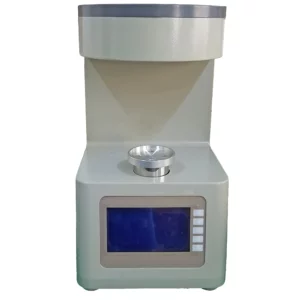To safely clean and maintain the Interface Tension Tester, follow these procedures:
- Power Off: Before cleaning or performing maintenance on the Interface Tension Tester, ensure that the power is turned off and the equipment is unplugged from the electrical outlet to prevent the risk of electric shock.
- Read User Manual: Refer to the user manual or manufacturer’s guidelines for specific instructions on cleaning and maintenance procedures for the Interface Tension Tester. Follow the recommended procedures provided by the manufacturer.
- Cleaning Surfaces: Use a soft, lint-free cloth dampened with water or a mild detergent solution to clean the external surfaces of the Interface Tension Tester. Avoid using abrasive cleaners or solvents that may damage the equipment.
- Cleaning Probes: If applicable, clean the probes or sensors of the Interface Tension Tester using a soft brush or cotton swab dampened with isopropyl alcohol. Gently wipe the probes to remove any dirt, debris, or residue that may affect their performance.
- Drying: After cleaning, ensure that all surfaces of the Interface Tension Tester are thoroughly dried with a clean, dry cloth to prevent moisture buildup and corrosion.
- Calibration Check: Periodically check the calibration of the Interface Tension Tester according to the manufacturer’s recommendations. Follow the prescribed calibration procedures to ensure accurate and reliable test results.
- Inspect Components: Regularly inspect all components of the Interface Tension Tester, including cables, connectors, probes, and displays, for signs of wear, damage, or malfunction. Interface tension tester Replace any damaged or worn parts as needed.
- Lubrication: If applicable, lubricate moving parts or mechanical components of the Interface Tension Tester according to the manufacturer’s recommendations. Use only recommended lubricants and apply them sparingly to prevent excess buildup.
- Storage: Store the Interface Tension Tester in a clean, dry, and well-ventilated environment when not in use. Protect it from dust, moisture, and extreme temperatures that may affect its performance and longevity.
- Regular Maintenance Schedule: Establish a regular maintenance schedule for the Interface Tension Tester based on the manufacturer’s recommendations and usage frequency. Perform routine maintenance tasks such as cleaning, calibration checks, and component inspections at specified intervals to ensure optimal performance and reliability.
- Training: Provide training to personnel responsible for cleaning and maintaining the Interface Tension Tester to ensure that they understand proper procedures and safety precautions.
By following these procedures, you can ensure the safe and effective cleaning and maintenance of the Interface Tension Tester, prolonging its lifespan and maintaining its accuracy and reliability in testing applications.
